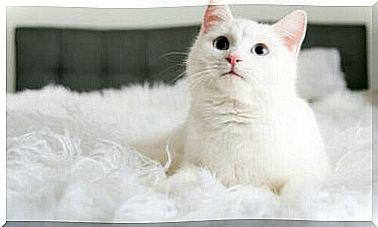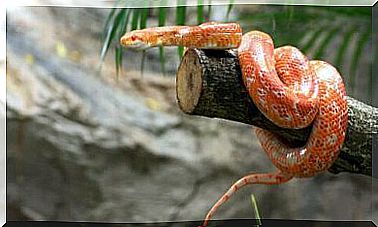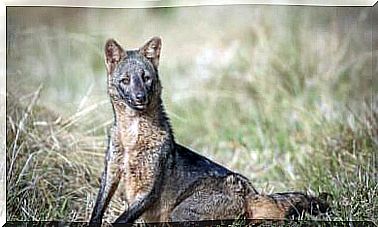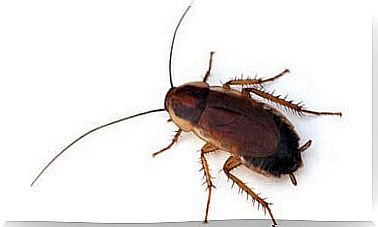Current Status Of The Short-tailed Albatross
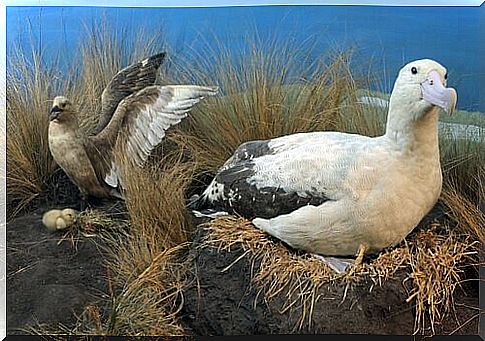
It is a medium-sized bird known for its large pink beak. In this article, we’ll talk about some characteristics of the short-tailed albatross, as well as its current situation.
Characteristics of the short-tailed albatross
Its scientific name is Phoebastria albatrus and it can measure about 90 centimeters in height and weigh about 10 kilos as an adult.
The short-tailed albatross changes color with age; since at birth and while young it has dark brown plumage and, when it becomes an adult, the feathers are whiter or more golden.
Both the neck and the chest are beige and draw attention to the huge square pink beak. One way to identify the age of a specimen is to look at the beak, as the older ones have a bluish border.
In terms of food, the short-tailed albatross includes in its diet mainly squid and, to a lesser extent, shrimp, flying fish eggs, small fish and crustaceans.
We know of populations that follow fishing vessels to feed on the waste and fish remains that are thrown into the sea.
Another interesting fact about their behavior is that they group into colonies once a year; just for the moment to hatch the only egg each couple has.
This goes on for more than two months. Adults can procreate after five or six years of life.
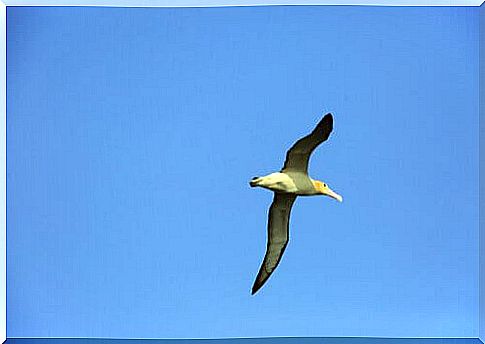
Regarding its distribution, it should be noted that this bird nests in Torishima (Japan) and on the Senkaku and Minami-Kojima islands, in China and Japan, respectively.
The territory in which the short-tailed albatross inhabits includes the northern Pacific Ocean; although it can also be seen in eastern Russia and even Alaska.
Past, present and future of the short-tailed albatross
The boom in albatross feathers began in the late 18th century, when they became very popular in North America and Europe.
The Industrial Revolution also caused this decline, as, at the time, clothing and accessories were made with feathers from these birds.
Among the qualities of this bird’s feathers, it is possible to emphasize that they are light, heat well and are waterproof. Therefore, they were used mainly for making coats and comforters.
Precisely, to make a quilt, more than a kilo of feathers was needed. Taking into account that the feathers of each adult specimen do not exceed 20 grams, it was necessary to kill a good number of them to obtain just one item.
Commercial hunting of short-tailed albatrosses in Japan began around 1885. The Tamaoki company was in charge of exporting the feathers and, when it realized that there were almost no birds in the vicinity, it also decided to capture those who lived on the neighboring islands.
Other companies have done the same in Hawaiian Islands. Criticism of how the Japanese killed these birds soon reached buyers and governments.
In 1903, Hawaiian authorities banned hunting in the territory and even declared this bird a national marine heritage.
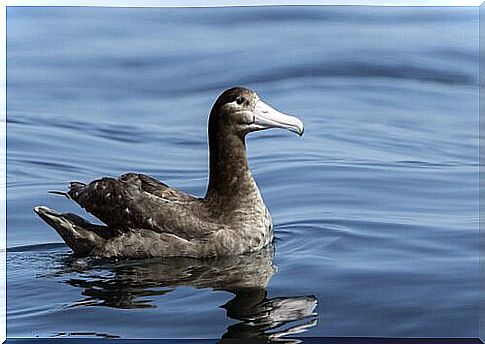
However, they continued to hunt elsewhere. In 1930, only 2,000 of these birds remained in Japan and the species was declared threatened with extinction.
Thanks to the director of the Yamashina Ornithological Institute, in 1933 the island of Torishima was declared a sanctuary; which prevented the continuation of the massacre.
Species recovery
In 1958, this island began to be studied by researchers and, of course, its main inhabitant, the short-tailed albatross, was studied.
In 1981, the Tokyo government carried out different activities in favor of the recovery of this wonderful bird, which allowed for greater reproduction in this region.
But, again, the species was declared in danger of extinction because the human presence in the region did not allow them to reproduce as they should.
With a technique of ‘carving’ wooden birds to attract the ‘real’, in a decade, the albatross population has increased remarkably.
Currently, the number of birds on the Japanese islands reaches almost 5,000, a low number, but this encourages scientists to continue with the procedures and tasks that help them to reproduce freely.
Although it is a vulnerable species, much work is being done to conserve it in its natural habitat.


